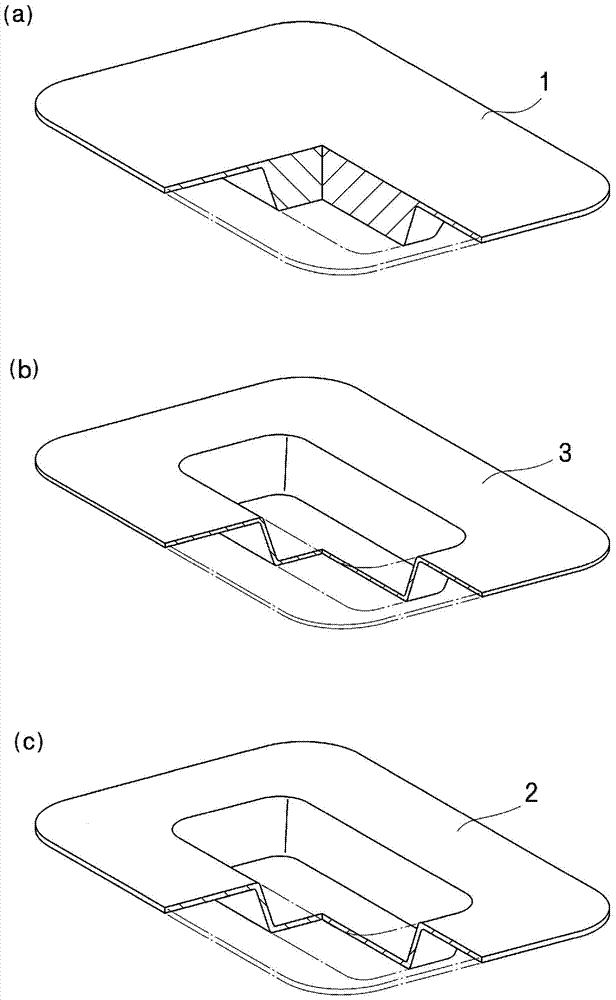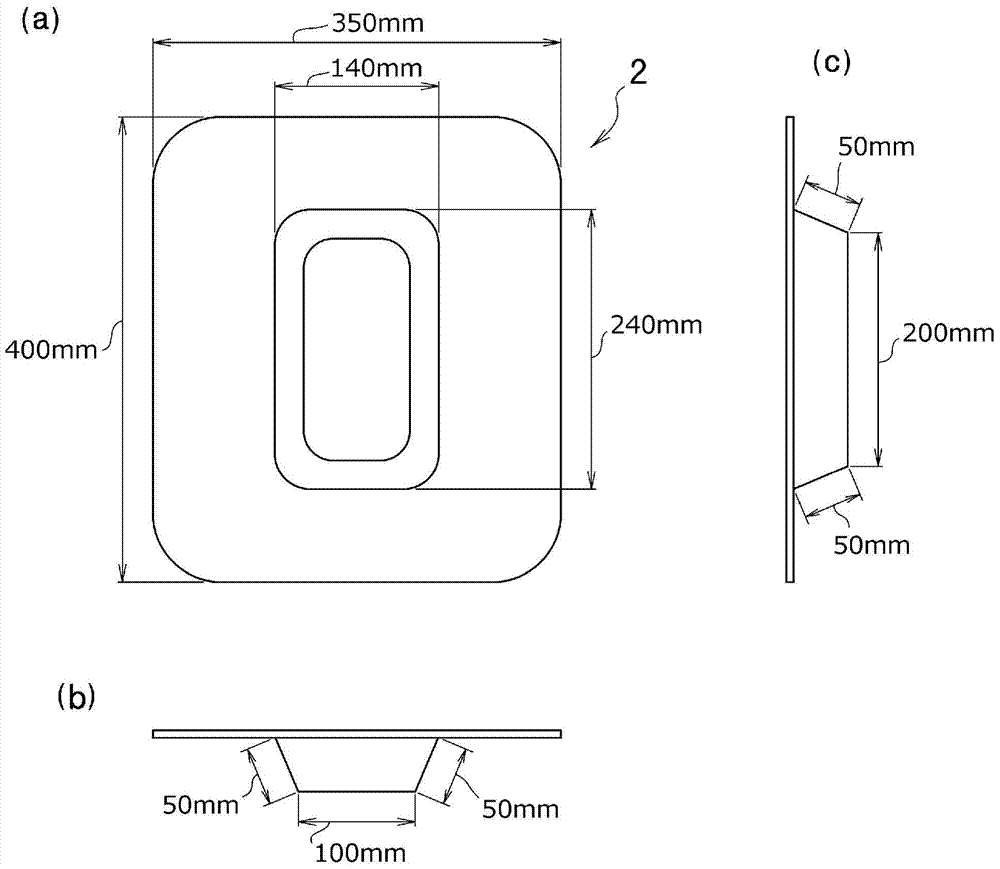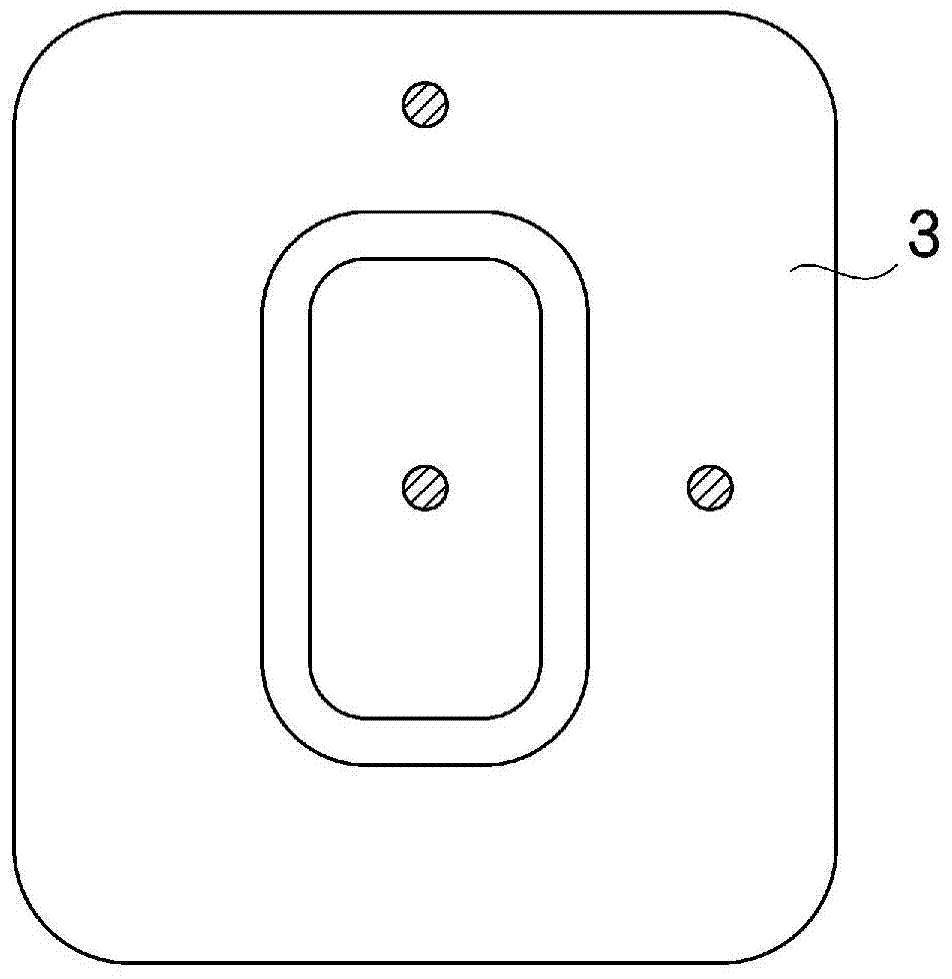Nonwoven fabric for press molding, method for producing same, and method for producing molded article
A technology of press molding and manufacturing method, which is applied in the fields of non-woven fabrics for press molding and their manufacture and the manufacture of molded bodies
- Summary
- Abstract
- Description
- Claims
- Application Information
AI Technical Summary
Problems solved by technology
Method used
Image
Examples
Embodiment 1
[0226] Polylactic acid fragments (melting point 170°C, weight average molecular weight 11.3×10 4 ), 1% by mass of carbon black with a median diameter d50 of 20 nm as a crystal nucleating agent, and triglycidyl isocyanurate (manufactured by Nissan Chemical Industry Co., Ltd. "TEPIC" (registered trademark. The following The same)) 2% by mass was put into the hopper of the spinning machine, melt-spun at a spinning temperature of 230°C using an extrusion-type spinning machine, cooled the spun filaments, applied an oil agent and bundled them, and then spun at a temperature of 1000 m / min draw to get unstretched wire.
[0227] The resulting undrawn yarns were bundled to form 800,000 dtex, stretched to 4.0 times in a liquid bath at 90°C, and then mechanically crimped with a stuffer box, heated at 145°C for 10 minutes, and then sprayed to give a relative crimp. Using 0.5% by weight of the oil agent in the fiber, the fiber was cut to 51 mm to obtain polylactic acid short fibers with a...
Embodiment 2
[0232] Using a roller carding machine, the same polylactic acid staple fiber and South African kenaf fiber as in Example 1 were mixed and opened at a mass ratio of 50:50 to make a web. Then, at a needle density of 60 / cm 2 Acupuncture and interweaving are carried out under certain conditions to obtain a weight per unit area of 556g / m 2 , Non-woven fabric with a thickness of 3.6mm. Regarding this nonwoven fabric, the tensile strength in the longitudinal direction is 128 N / cm 2 , the transverse tensile strength is 84N / cm 2 , The longitudinal tensile stress of 30% tensile elongation in 200°C atmosphere is 19N / cm 2 , the transverse tensile stress is 16N / cm 2 . In addition, the cooling crystallization temperature of the polylactic acid fiber in the nonwoven fabric was 127°C. In addition, the fiber length frequency distribution of South African kenaf fibers having a fiber length of 45 mm or more in the nonwoven fabric was 87%, and the interweaving of polylactic acid fibers an...
Embodiment 3
[0235] Using a roller carding machine, the same polylactic acid staple fiber and South African kenaf fiber as in Example 1 were mixed and opened at a mass ratio of 30:70 to make a web. Then, in the first acupuncture 80 / cm 2 , the second acupuncture 80 / cm 2 , The total needle density is 160 pcs / cm 2 Acupuncture and interweaving are carried out under certain conditions to obtain a weight per unit area of 514g / m 2 , Non-woven fabric with a thickness of 3.4mm. Regarding this nonwoven fabric, the tensile strength in the longitudinal direction is 58 N / cm 2 , the transverse tensile strength is 34N / cm 2 , The longitudinal tensile stress of 30% tensile elongation in 200°C atmosphere is 9N / cm 2 , the transverse tensile stress is 8N / cm 2 . In addition, the cooling crystallization temperature of the polylactic acid fiber in the nonwoven fabric was 127°C. In addition, the fiber length frequency distribution of kenaf fibers having a fiber length of 45 mm or more in the nonwoven fa...
PUM
| Property | Measurement | Unit |
|---|---|---|
| melting point | aaaaa | aaaaa |
| melting point | aaaaa | aaaaa |
| melting point | aaaaa | aaaaa |
Abstract
Description
Claims
Application Information
 Login to View More
Login to View More - R&D
- Intellectual Property
- Life Sciences
- Materials
- Tech Scout
- Unparalleled Data Quality
- Higher Quality Content
- 60% Fewer Hallucinations
Browse by: Latest US Patents, China's latest patents, Technical Efficacy Thesaurus, Application Domain, Technology Topic, Popular Technical Reports.
© 2025 PatSnap. All rights reserved.Legal|Privacy policy|Modern Slavery Act Transparency Statement|Sitemap|About US| Contact US: help@patsnap.com



